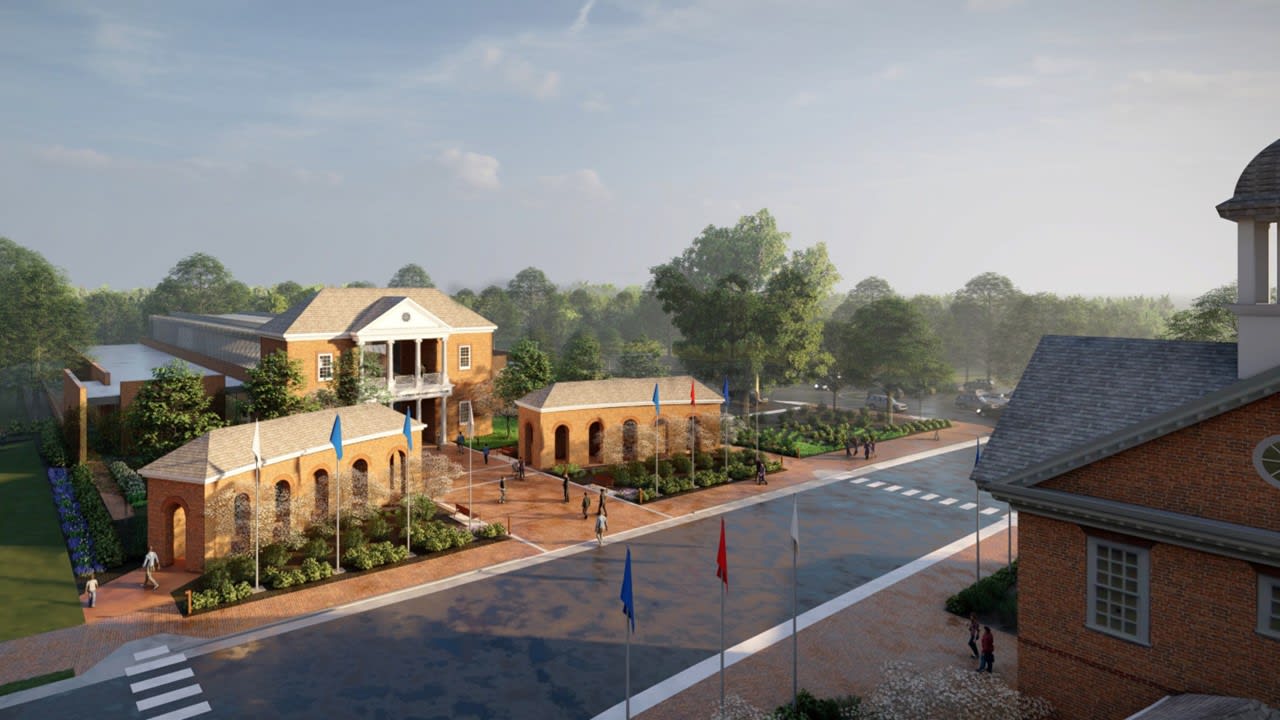After nearly a century of excavations in the Historic Area, Colonial Williamsburg’s archaeologists have uncovered an estimated 60 million artifacts.
They are likely only a fraction of the buried clues still waiting to be discovered.
“We have excavated only about 19% to 20% of the Historic Area in 95 years. There’s a lot more coming,” said Ronald L. Hurst, senior vice president for education and historic resources for Colonial Williamsburg.
As they have been studying and cataloging millions of artifacts, Colonial Williamsburg’s archaeologists have outgrown their workspace, which lacks modern, well-lit labs and secure, spacious collections areas. “It’s been past its shelf date for about 20 years,” Hurst said. “We need space. We need clean, well-organized and environmentally appropriate space for collections and collections-related work.”
To give archaeologists the space and resources they need, The Colonial Williamsburg Foundation has been working on plans to build the Colin G. and Nancy N. Campbell Archaeology Center, with an expectation of opening the center to the public in 2026. The new home for Colonial Williamsburg’s archaeologists also promises to be a groundbreaking place to engage guests and community members.
Though some archaeological centers exhibit artifact collections or give the public access to labs, no existing center does both.
“We are excited about the opportunity to have the center open to the public in a way that will make archaeology accessible,” Hurst said.
That accessibility extends to its location. The facility will be situated across from the Art Museums of Colonial Williamsburg on Nassau Street, putting the Archaeology Center — as Hurst puts it — at a “front door” of the Historic Area.
The Foundation’s collection of artifacts, the vast majority of which aren’t being publicly displayed now, will be prominent in the Archaeology Center. “Collections are packed in boxes, stacked to the ceilings, so they’re basically inaccessible,” Hurst said.
Jack Gary, the Foundation’s director of archaeology, estimates that the items on exhibition represent a tiny fraction of the full collection. Even artifacts from the Study Collection are not currently on display. The Study Collection, which Gary described as “the cream of the crop,” features iconic pieces that help tell the stories of specific sites and the people who lived there.
The Archaeology Center will provide exhibition space to highlight a greater number of artifacts and expand access to the Study Collection, which will be displayed as a “jewel box at the center of the building,” according to Gary. “I am looking forward to seeing guests, the community and colleagues come through the front door and see that collection, front and center, and have their breath taken away by it.”
Added display space offers an opportunity to showcase some favorites, such as a pair of 17th-century close helmets — military headgear that many people think of when they imagine a knight’s helmet. Gary noted that the helmets, which are not currently on view, were a popular attraction at the Winthrop Rockefeller Archaeology Museum at Carter’s Grove. “There will be people who remember them from Carter’s Grove and will be glad to see them back on display,” Gary said, “and there will be other people who’ve never seen them before and will be wowed.”
Wine bottles recovered from the foundation of Wetherburn’s Tavern are another favorite, partly because of what are inside: cherries. “Somebody was either making cherry liqueur at the tavern or pickling cherries, something like that,” Gary said. “To be able to show all those bottles out in one spot will be, I think, very fun for people to see.”
Though archaeological excavations are a common sight in the Historic Area, the new center will show guests what happens next: cleaning, cataloging and studying artifacts. The center’s lab will feature glass panels so guests can glimpse that work. Frequent guided tours will offer behind-the-scenes access to gain a fuller picture of the archaeological process.
“Moments of discovery often come in the lab, and so our guests will get to see the process after the artifacts come in from the field,” Gary said. That includes the process of cleaning and identifying the objects.
The facility will offer guests the opportunity to be a part of those “moments of discovery.” Gary envisions hands-on activities, such as guests, school groups and community members helping archaeologists wash artifacts. Such programming would help the public “get a sense of the tactile experience of handling these objects,” he said.
Hurst and Gary have been working closely with architects from Clark Nexsen, the firm hired to design the new building, to ensure that the facility will serve both archaeologists and the public.
“By pure happenstance, the principal architect on the team grew up in Williamsburg, just two blocks from the site of the building. He totally understands who we are,” Hurst said.
That hometown connection reflects the spirit of the project and the public partnership it aims to foster. The Archaeology Center will be a place where everyone — researchers, guests and members of the Williamsburg community — can come together and share in the magic of archaeological discovery.
HOW YOU CAN HELP
Plans are underway for the Colin G. and Nancy N. Campbell Archaeology Center, thanks to donor support, including a generous lead donation by the late Forrest E. Mars Jr. Additional funding is needed to begin construction. Gifts to the Foundation support the creation of new facilities like the Campbell Archaeology Center, as well as the preservation of artifacts that tell Williamsburg’s story and the programming that makes history accessible to all.
To contribute to Colonial Williamsburg and ensure that its work can continue, please visit colonialwilliamsburg.org/TT. If you would like more information on how you can contribute to the Campbell Archaeology Center, contact us at [email protected].
